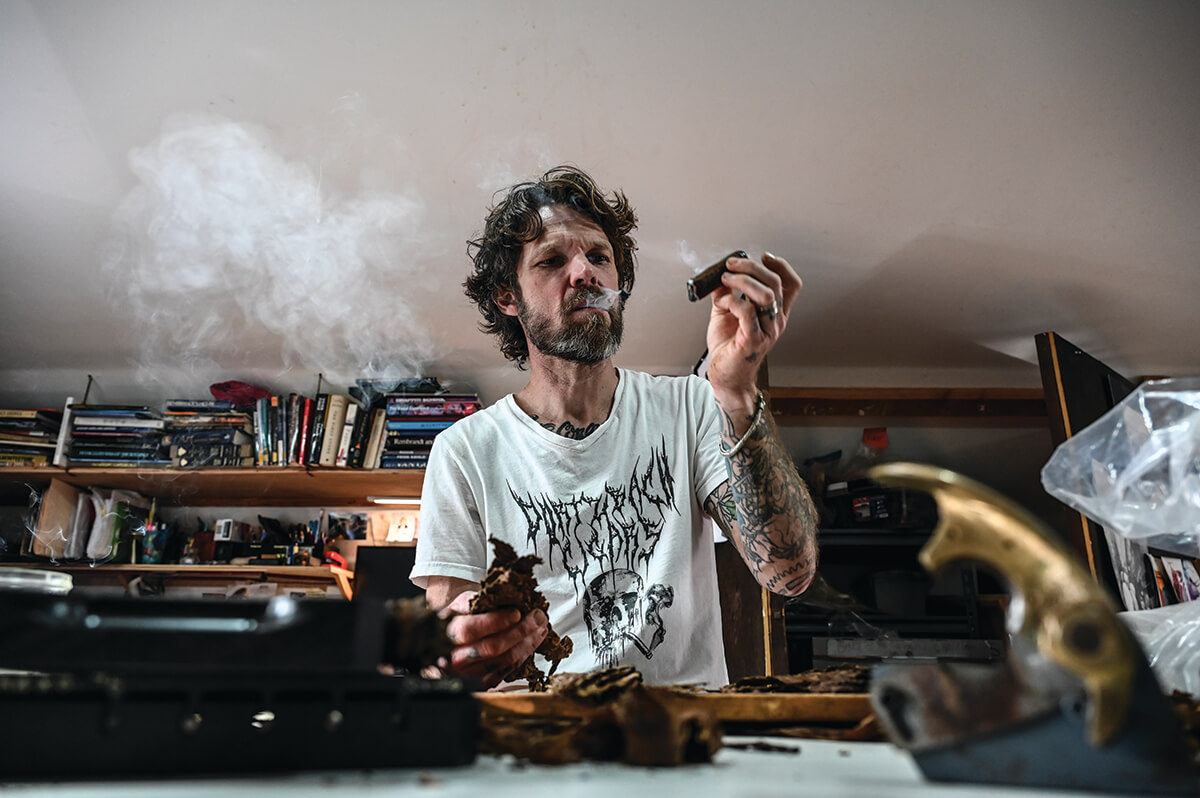News & Community
Jesse Dortzbach Shares the Magic of Making a Good Cigar
Meet the proprietor of Dortzbach Cigars, a one-man operation that sells custom-made, hand-rolled stogies and offers classes in Baltimore County.

Smoking is very much permitted in Jesse Dortzbach’s workplace. In the studio that he built himself behind his Towson home, smoke wafts from the tip of a cigar that he also made with his own two tattooed hands.
A Baltimore County art teacher, Dortzbach has been hand-rolling cigars as a side gig since 2021. The craft fits perfectly with his artistic mind and handy spirit—not to mention his unfettered love for smoking the cigars.
“This started purely out of curiosity and an interest in saving money,” says Dortzbach, who smokes multiple stogies a day. “When I first started learning, I’d be out here rolling until two, three in the morning. It’s really zen.”
Dortzbach, 45, has been puffing for more than two decades. He’s come a long way since he fired up his first one, accidentally inhaled it, and then threw up.
Now, he’s proprietor of Dortzbach Cigars, a one-man operation that sells custom-made, hand-rolled cigars and offers classes. Over the course of four hours, groups of up to seven people learn how to roll their own while smoking and enjoying a hand-crafted Old-Fashioned (Dortzbach’s beverage of choice while he works).
The magic of making a good cigar, he says, is in the blend of tobacco. He buys his through a wholesaler that orders from as far away as Africa and as close as Maryland. Roughly 8 to 16 leaves comprise the three parts—filler, binder, and wrapper—of a cigar. It takes him about 10 minutes to roll one, using just his hands and a mold, where it sits for another 30 to 45 minutes.
The turnaround time for customers (minimum order of four, starting at $12 each, purchased via his website) is two to three weeks.
“A cigar might taste really good, but if it doesn’t burn well, you’re not likely to smoke the whole thing,” he says. “But a cigar that burns well, most people will smoke it all the way down. Finding that balance is a key component.”
The fun, he stresses to his students, is in the process. “Some guys figure it out pretty quick,” he says. “Some guys, their cigars look pretty terrible. They end up just chilling out, smoking, watching their buddies do it. But the cool thing about cigar culture is that it’s a unifying experience. It really doesn’t matter what your background is. I’ve had everyone from MTA drivers to corporate lawyers to people like me, teachers. They come together because they love the fellowship of it.”
Dortzbach is a connoisseur—he uses words like citrus, grassy, and chocolate to describe cigar flavors—but he’s always learning.
For every three cigars he rolls, two meet his standard to sell. The third he fires up, sits back, and enjoys.